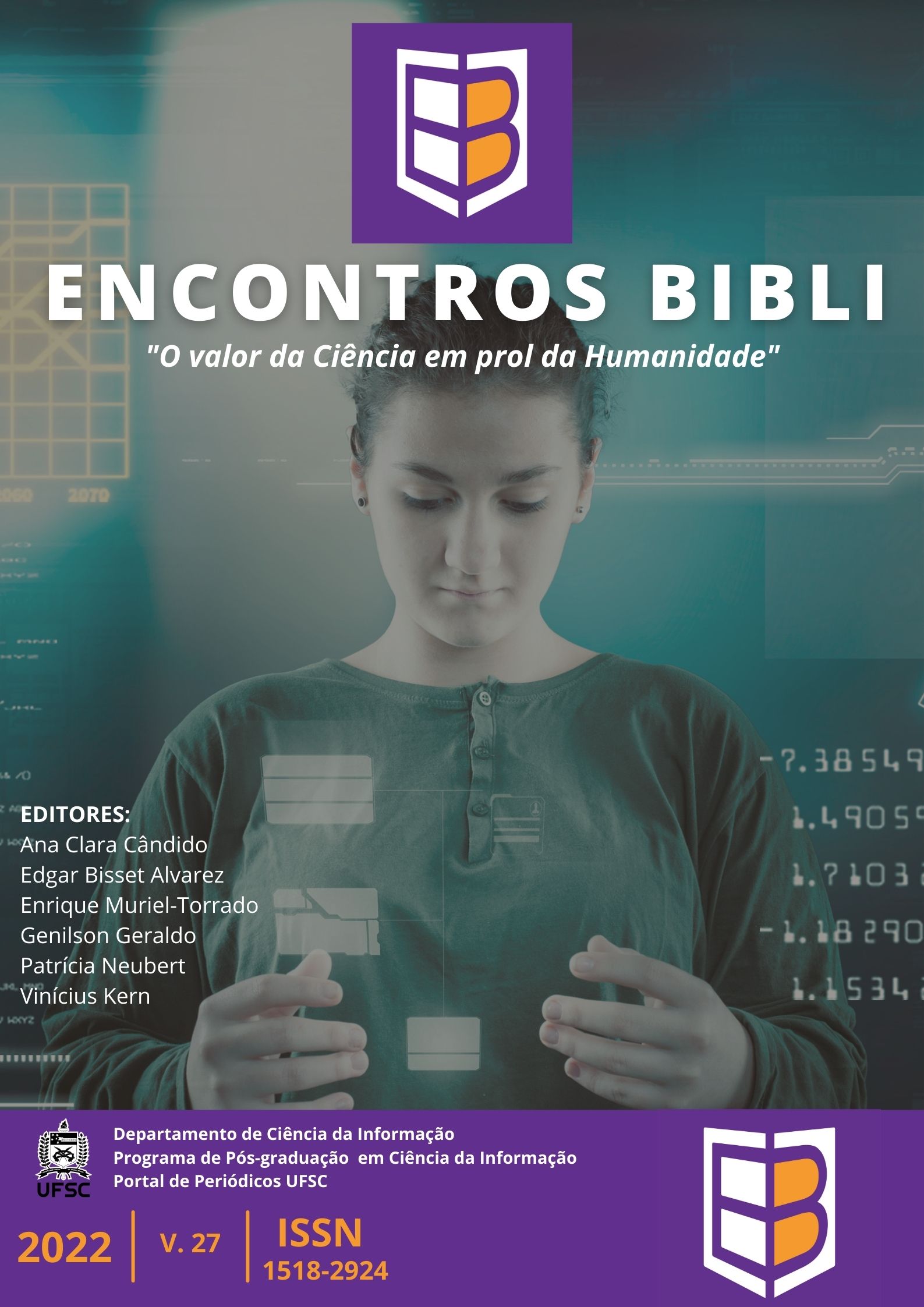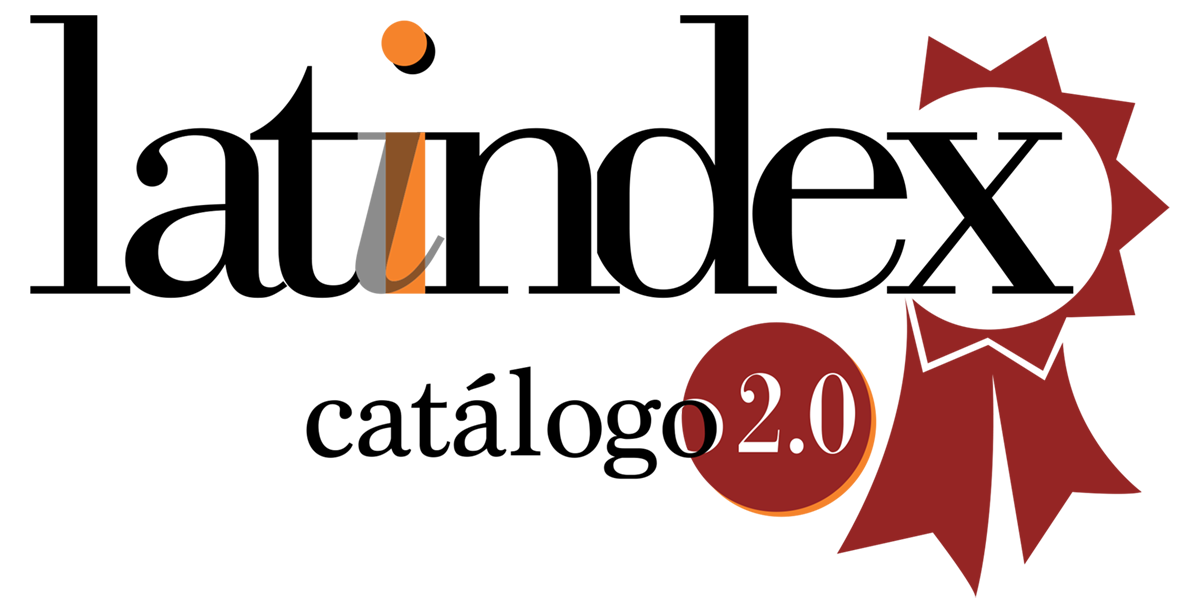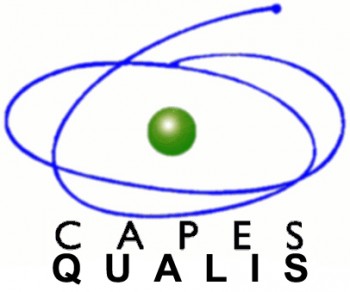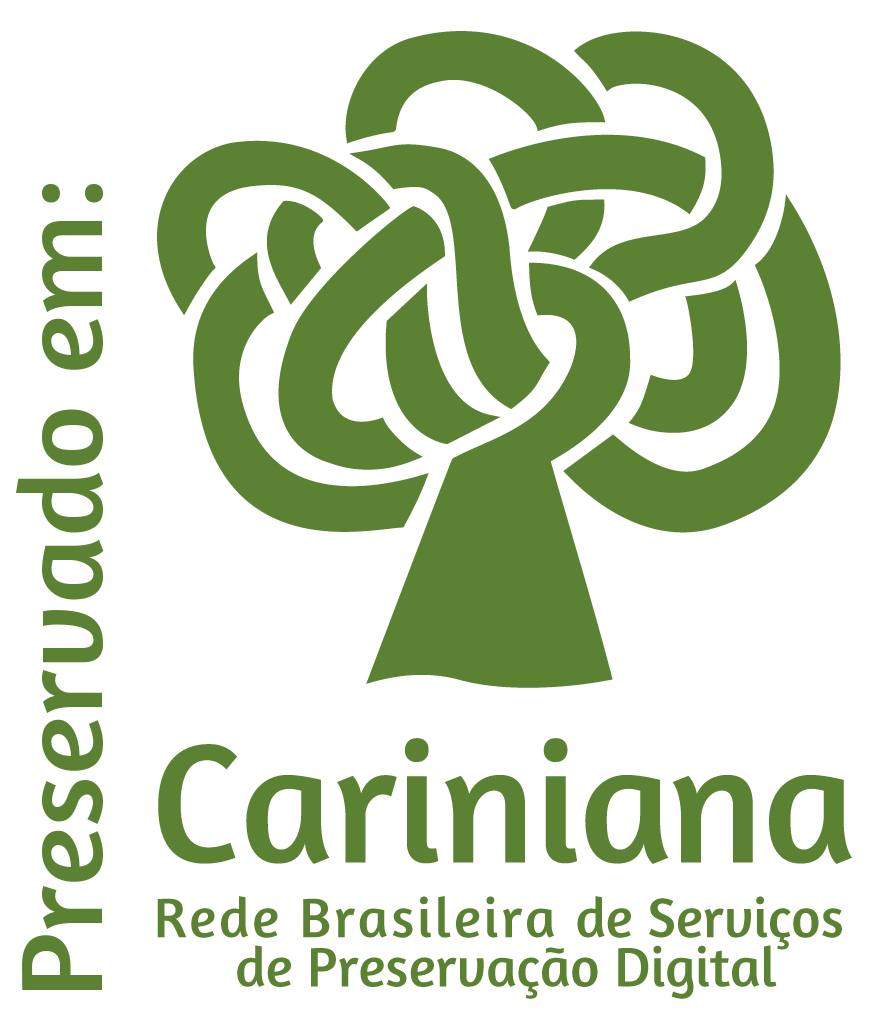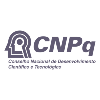Acesso aberto e financiamento da pesquisa no Brasil: características e tendências da produção científica
DOI:
https://doi.org/10.5007/1518-2924.2022.e78818Resumo
Objetivo: este estudo se propõe a analisar a distribuição da produção científica brasileira, considerando seu crescimento e possível relação entre as variáveis indexação, financiamento da pesquisa e modalidades de acesso aberto. Mensura a adesão ao acesso aberto, considerando as bases de indexação, a presença ou ausência de financiamento, e as modalidades e áreas de financiamento de pesquisa pela Fundação de Amparo à Pesquisa do Estado de São Paulo (Fapesp).
Método: o estudo tem caráter exploratório, pautando-se em abordagem cientométrica para análise das variáveis de interesse. Considera a totalidade de artigos originais e de revisão publicados por autores filiados a instituições brasileiras no período de 2009 a 2016. Informações sobre as modalidades de financiamento de artigos resultantes de pesquisa financiada pela Fapesp foram obtidos de sua Biblioteca Virtual (BV Fapesp).
Resultado: observou um aumento significativo de artigos em acesso restrito na Web of Science (WoS), além de aumento percentual de artigos sem menção a financiamento. Dentre as modalidades de acesso aberto a via Bronze se destaca no início do período, dando lugar à Dourada; e a SciELO representa quase 50% em acesso aberto, quando não há menção a financiamento, e 20% quando se declara o financiamento. As modalidades de fomento Fapesp revelam relação entre: níveis de bolsa e modalidades de acesso aberto, com maior nível e publicação na WoS, e menor nível na SciELO; auxílios Regular e Biota têm na SciELO maior percentual, enquanto Temáticos, CEPIDs e Jovem Pesquisador na WoS. Finalmente, observou-se que praticamente todas as áreas aumentam o percentual de artigos em acesso restrito no final do período, com destaque para as Humanas.
Conclusões: a produção científica brasileira sinaliza que a tendência em direção ao acesso aberto é invertida entre os subperíodos analisados. As iniciativas da Fapesp são percebidas, tendo-se observado tendência favorável à via Dourada, em periódicos Web of Science, enquanto o SciELO reforça tal tendência, tanto na pesquisa financiada pela Fapesp, quanto na produção financiada por outras agências, assim como nas publicações sem menção a financiamento. Diante de tais circunstâncias, os pesquisadores de instituições paulistas credenciados em programas de pós-graduação veem-se obrigados a encontrar um ponto de intersecção, que priorize o fator de impacto, porém muitas vezes tendo que abrir mão do acesso aberto.
Downloads
Referências
ALBAGLI, S.; CLÍNIO, A.; RAYCHTOCK, S. Ciência Aberta: correntes interpretativas e tipos de ação. Liinc em Revista, Brasília, v. 10, n. 2, 2014. DOI: 10.18617/liinc.v10i2.749
APPEL, A. L.; ALBAGLI, S. The adoption of Article Processing Charges as a business model by Brazilian Open Access journals. Transinformação, Campinas, v. 31 p.18-25, 2019. DOI: 10.1590/2318-0889201931e180045
BIREME/OPS/OMS. Centro latino-americano e do Caribe de informação em ciências da saúde. Utilitários CISIS - Manual de Referência - Versão 5.2. São Paulo: BIREME/OPS/OMS, 2006.
BJÖRK, B.-C.; SOLOMON, D. Open access versus subscription journals: a comparison of scientific impact. BMC Medicine, Chichester, v. 10, n. 1, p. 73, 2012. DOI: 10.1186/1741-7015-10-73
BORGMAN, C. L.; FURNER, J. Scholarly communication and bibliometrics. ARIST, White Plains, v. 36, n. 1, p. 2-72, 2002. DOI 10.1002/aris.1440360102
CASTRO, R. Indexação de revistas científicas em bases de dados. In: POBLACIÓN, D. A. P. et al. (org.) Revistas científicas: dos processos tradicionais às perspectivas alternativas de comunicação. Cotia: Ateliê Editorial, 2011. p. 109-126.
CURRY, S. et al. The changing role of funders in responsible research assessment: progress obstacles and the way ahead. Londres: Research on Research Institute, 2020. 64 p. (Working Paper n. 3). DOI: 10.6084/m9.figshare.13227914.v1
SCIENCE EUROPE. cOAlition S: making open access a reality by 2020. Brussels: Science Europe. Disponível em: https://www.coalition-s.org/wp-content/uploads/cOAlitionS_Press_Release-1.pdf. Acesso em: 30 nov. 2020.
COSTAS, R.; VAN LEEUWEN, T. N. Approaching the "reward triangle": General analysis of the presence of funding acknowledgments and "peer interactive communication" in scientific publications. Journal of the American Society for Information Science and Technology, New York, v. 63, n. 8, p. 1647-1661, 2012. DOI: 10.1002/asi.22692
EYSENBACH, G. Citation advantage of open access articles. PLOS Biology, San Francisco, v. 4, n. 7, p. e157, 2006. DOI: 10.1371/journal.pbio.0040157
GUÉDON, J. C. Acesso Aberto e a divisão entre ciência predominante e ciência periférica. In: FERREIRA, S. M. S. P.; TARGINO, M. G. (org.) Acessibilidade e visibilidade de revistas científicas eletrônicas. São Paulo: Senac/CENGAGE Learning, 2010. p. 21-77.
HARNAD, S. et al. The access/impact and the green and gold roads to open access: an update. Serials Review, Greenwich, v. 34, n. 1, p. 36-40, 2008. DOI: 10.1080/00987913.2008.10765150
LAAKSO, M. et al. The Development of open access journal publishing from 1993 to 2009. PLOS ONE, San Francisco, v. 6, n. 6, p. e20961, 2011. DOI: 10.1371/journal.pone.0020961
MCKIERNAN, E. C. et al. Meta-research: use of the journal impact factor in academic review, promotion, and tenure evaluations. ELife, Cambridge, v. 8, p. e47338, 2019.
MCMANUS, C. et al. International collaboration in Brazilian science: financing and impact. Scientometrics, Amsterdam, v. 125, n. 3, p. 2745-2772, 2020. DOI: 10.1007/s11192-020-03728-7
MUGNAINI, R. et al. Panorama da produção científica do Brasil além da indexação: uma análise exploratória da comunicação em periódicos. Transinformação, Campinas, v. 31, p. e190033, 2019. DOI: 10.1590/2318-0889201931e190033
MUGNAINI, R.; DIGIAMPIETRI, L. A.; MENA-CHALCO, J. P. Comunicação científica no Brasil (1998-2012): indexação, crescimento, fluxo e dispersão. Transinformação, Campinas, v. 26, n. 3, p. 239-252, 2014. DOI: 10.1590/0103-3786201400030002
MUGNAINI, R.; IGAMI, M. P. Z.; KRZYZANOWSKI, R. F. Indexação e financiamento da pesquisa no Brasil: relações cientométricas. In: ENCONTRO BRASILEIRO DE BIBLIOMETRIA E CIENTOMETRIA, 7., 2020, Salvador. Anais [...] Salvador: UFBA, 2020. p. 281-287. Disponível em: http://repositorio.ufba.br/ri/handle/ri/32385. Acesso em: 3 dez. 2020.
MUGNAINI, R.; PIO, L. A. S.; PAULA, A. S. A. A comunicação científica em periódicos no Brasil: índices de citação, indexação e indicadores bibliométricos na avaliação da ciência. In: CARNEIRO, F. F. B.; FERREIRA NETO, A.; SANTOS, W. (org.) A comunicação científica em periódicos. Curitiba: Appris, 2019. p. 173-202.
PACKER, A. L. The SciELO open access: a gold way from the south. Canadian Journal of Higher Education, Toronto, v. 39, n. 3, p. 111-126, 2009.
PAUL-HUS, A.; DESROCHERS, N.; COSTAS, R. Characterization, description, and considerations for the use of funding acknowledgement data in Web of Science. Scientometrics, Amsterdam, v. 108, n. 1, p. 167-182, 2016. DOI: 10.1007/s11192-016-1953-y
PIWOWAR, H. et al. The state of OA: a large-scale analysis of the prevalence and impact of Open Access articles. PeerJ, London, v. 6, p. e4375, 2018. DOI: 10.7717/peerj.4375
PÖLÖNEN, J.; AURANEN, O. Research performance and scholarly communication profile of competitive research funding: the case of Academy of Finland. In: INTERNATIONAL CONFERENCE ON SCIENTOMETRICS AND INFORMETRICS, 18., 2021, Bélgica. Anais [...] Leuven: Universidade Católica de Leuven, 2021. p. 901-912.
REZENDE, L. V. R.; FALGUERAS, E. A. Estado da arte dos marcos regulatórios brasileiros rumo à ciência aberta. Encontros Bibli, Florianópolis, v. 25, p. 01-25, 2020. DOI: 10.5007/1518-2924.2020.e71370
RIGBY, J. Systematic grant and funding body acknowledgement data for publications: new dimensions and new controversies for research policy and evaluation. Research Evaluation, Guildford, v. 20, n. 5, p. 365-375, 2011. DOI: 10.3152/095820211X13164389670392
SALATINO, M. Open Access in dispute in Latin America: toward the construction of counter-hegemonic structures of knowledge. In: MARTENS, C.; VENEGAS, C.; TAPUY, E. F. S. S. (ed.) Digital activism, community media, and sustainable communication in Latin America. Cham: Palgrave Macmillan, 2020. p. 125-148.
SANTOS, S. M.; MUGNAINI, R. Comunicação científica em periódicos e a internacionalização das ciências brasileiras. In: CARNEIRO, F. F. B.; FERREIRA NETO, A.; SANTOS, W. (org.) A comunicação científica em periódicos. Curitiba: Appris, 2019. p. 73-94.
SINGH, V. K. et al. The journal coverage of Web of Science, Scopus and Dimensions: A comparative analysis. Scientometrics, Amsterdam, v. 126, n. 6, p. 5113-5142, 2021. DOI: 10.1007/s11192-021-03948-5
TENNANT, J. P. et al. The academic, economic and societal impacts of Open Access: an evidence-based review. F1000Research, London, v. 5, 2016. DOI: 10.12688/f1000research.8460.3
VAN NOORDEN, R. Open access: the true cost of science publishing. Nature, London, v. 495, n. 7442, p. 426-429, 2013. DOI: 10.1038/495426a
VANCLAY, J. K. Impact factor: outdated artefact or stepping-stone to journal certification? Scientometrics, Amsterdam, v. 92, n. 2, p. 211-238, 2012. DOI: 10.1007/s11192-011-0561-0
VESSURI, H.; GUÉDON, J. C.; CETTO, A. M. Excellence or quality? Impact of the current competition regime on science and scientific publishing in Latin America and its implications for development. Current Sociology, London, v. 62, n. 5, p. 647-665, 2014. DOI: 10.1177/0011392113512839
WANG, J.; SHAPIRA, P. Funding acknowledgement analysis: an enhanced tool to investigate research sponsorship impacts: the case of nanotechnology. Scientometrics, Amsterdam, v. 87, n. 3, p. 563-586, 2011. DOI: 10.1007/s11192-011-0362-5
WEITZEL, S. R. As novas configurações do Acesso Aberto: desafios e propostas. RECIIS-Revista Eletrônica de Comunicação, Informação & Inovação em Saúde, Rio de Janeiro, v. 8, n. 2, p. 65-75, 2014. DOI: 10.3395/reciis.v8i2.447
Downloads
Publicado
Como Citar
Edição
Seção
Licença
Copyright (c) 2022 Rogério Mugnaini, Mery Piedad Zamudio Igami, Rosaly Favero Krzyzanowski

Este trabalho está licenciado sob uma licença Creative Commons Attribution 4.0 International License.
O autor deve garantir:
- que haja um consenso completo de todos os coautores em aprovar a versão final do documento e sua submissão para publicação.
- que seu trabalho é original, e se o trabalho e/ou palavras de outras pessoas foram utilizados, estas foram devidamente reconhecidas.
Plágio em todas as suas formas constituem um comportamento antiético de publicação e é inaceitável. Encontros Bibli reserva-se o direito de usar software ou quaisquer outros métodos de detecção de plágio.
Todas as submissões recebidas para avaliação na revista Encontros Bibli: revista eletrônica de biblioteconomia e ciência da informação passam por identificação de plágio e autoplágio. Plágios identificados em manuscritos durante o processo de avaliação acarretarão no arquivamento da submissão. No caso de identificação de plágio em um manuscrito publicado na revista, o Editor Chefe conduzirá uma investigação preliminar e, caso necessário, fará a retratação.
Esta revista, seguindo as recomendações do movimento de Acesso Aberto, proporciona seu conteúdo em Full Open Access. Assim os autores conservam todos seus direitos permitindo que a Encontros Bibli possa publicar seus artigos e disponibilizar pra toda a comunidade.
Os conteúdos de Encontros Bibli estão licenciados sob uma Licença Creative Commons 4.0 by.

Qualquer usuário tem direito de:
- Compartilhar — copiar, baixar, imprimir ou redistribuir o material em qualquer suporte ou formato
- Adaptar — remixar, transformar, e criar a partir do material para qualquer fim, mesmo que comercial.
De acordo com os seguintes termos:
- Atribuição — Você deve dar o crédito apropriado, prover um link para a licença e indicar se mudanças foram feitas. Você deve fazê-lo em qualquer circunstância razoável, mas de maneira alguma que sugira ao licenciante a apoiar você ou o seu uso.
- Sem restrições adicionais — Você não pode aplicar termos jurídicos ou medidas de caráter tecnológico que restrinjam legalmente outros de fazerem algo que a licença permita.

